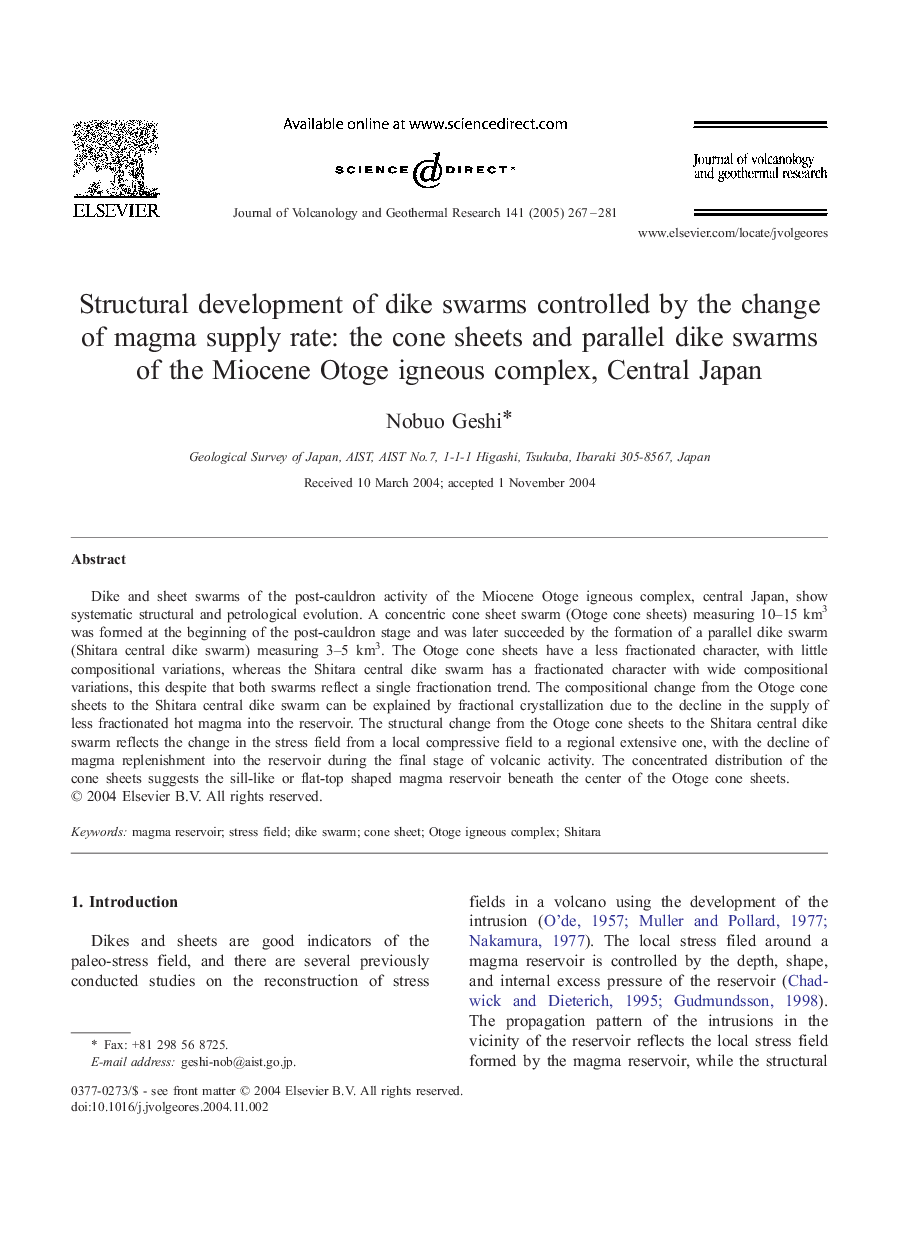| Article ID | Journal | Published Year | Pages | File Type |
|---|---|---|---|---|
| 9531292 | Journal of Volcanology and Geothermal Research | 2005 | 15 Pages |
Abstract
Dike and sheet swarms of the post-cauldron activity of the Miocene Otoge igneous complex, central Japan, show systematic structural and petrological evolution. A concentric cone sheet swarm (Otoge cone sheets) measuring 10-15 km3 was formed at the beginning of the post-cauldron stage and was later succeeded by the formation of a parallel dike swarm (Shitara central dike swarm) measuring 3-5 km3. The Otoge cone sheets have a less fractionated character, with little compositional variations, whereas the Shitara central dike swarm has a fractionated character with wide compositional variations, this despite that both swarms reflect a single fractionation trend. The compositional change from the Otoge cone sheets to the Shitara central dike swarm can be explained by fractional crystallization due to the decline in the supply of less fractionated hot magma into the reservoir. The structural change from the Otoge cone sheets to the Shitara central dike swarm reflects the change in the stress field from a local compressive field to a regional extensive one, with the decline of magma replenishment into the reservoir during the final stage of volcanic activity. The concentrated distribution of the cone sheets suggests the sill-like or flat-top shaped magma reservoir beneath the center of the Otoge cone sheets.
Related Topics
Physical Sciences and Engineering
Earth and Planetary Sciences
Geochemistry and Petrology
Authors
Nobuo Geshi,
